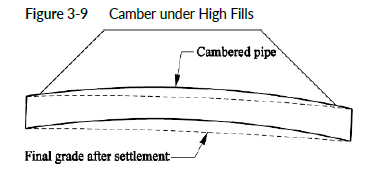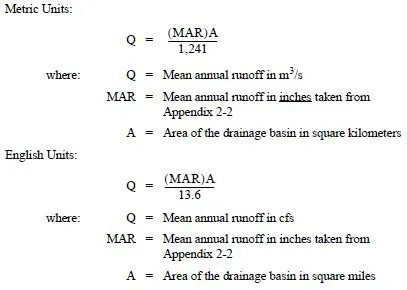When a culvert is installed under moderate to high fills 30 to 60 feet or higher, greater settlement of the fill may occur under the center of the roadway than at the sides. This occurs because at the culvert ends there is little fill while the centerline of the roadway contains the maximum fill. The difference in surcharge pressure at the elevation of the culvert may cause differential settlement of the fill and can create a low point in the culvert profile. To correct for the differential settlement, a culvert can be constructed with a slight upward curve in the profile, or camber, as shown in Figure 3-9. This is determined by the HQ geotech.
The camber is built into the culvert during installation by laying the upstream half of the culvert on a flat grade and the downstream half on a steeper grade to obtain the design grade after settlement. The amount of expected camber can be determined by the HQ Materials Laboratory and must be shown on the appropriate profile sheet in the contract plans.

